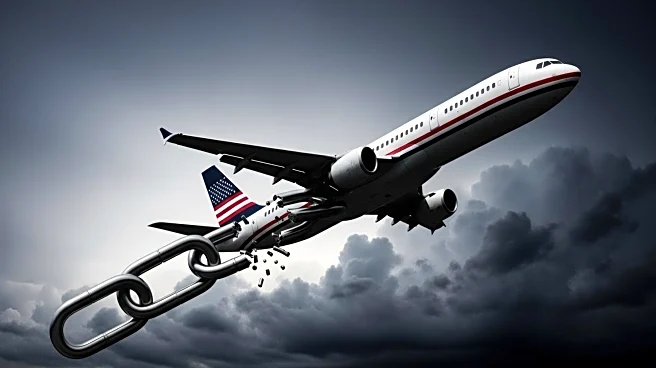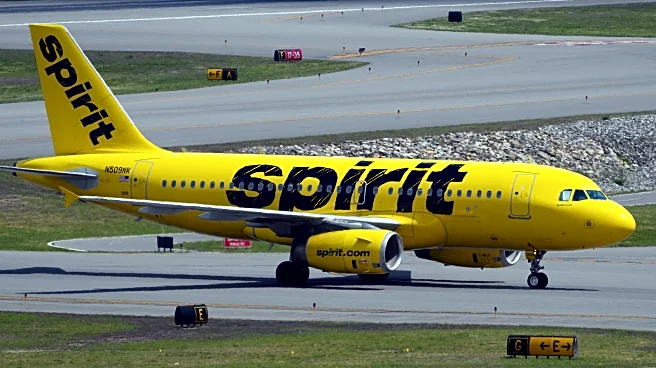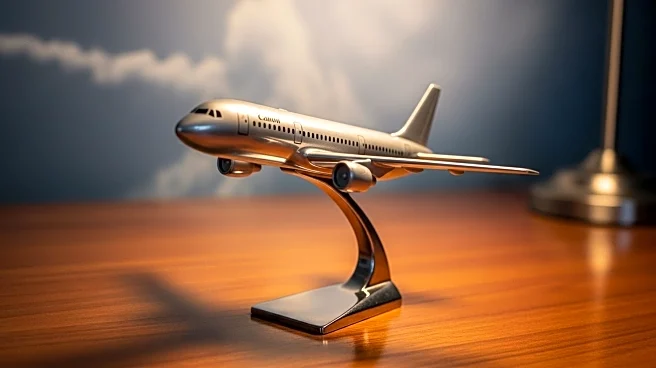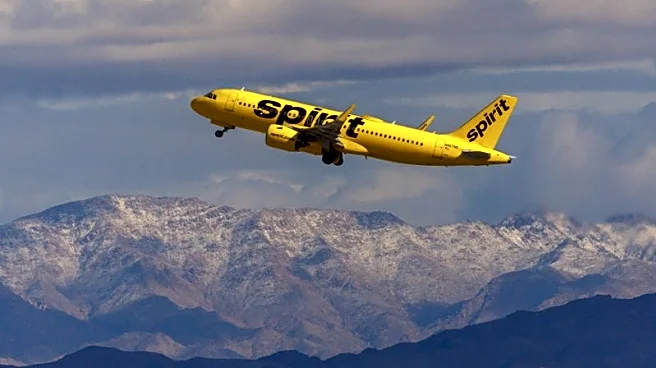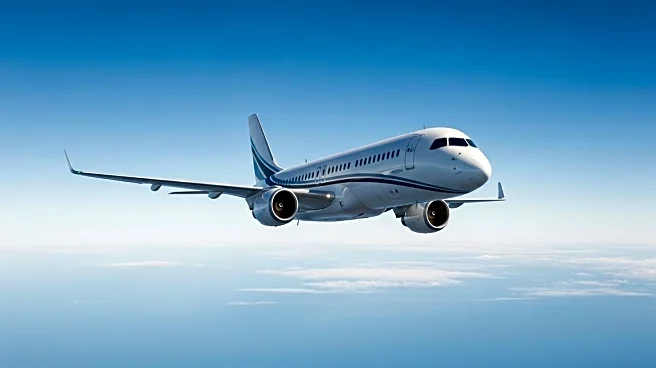What's Happening?
Spirit Airlines has filed for Chapter 11 bankruptcy for the second time, highlighting significant challenges within the U.S. budget airline sector. Despite previous restructuring efforts, including a $795 million debt-to-equity swap and $350 million in new financing, Spirit continues to face financial distress. The airline's liquidity crisis is underscored by a $600 million free cash flow deficit and $2.689 billion in total debt. Rising fuel costs, labor shortages, and changing consumer preferences towards premium amenities have exacerbated the situation. Spirit's operating margin of -18% in Q2 2025 reflects the widening profitability gap compared to legacy carriers like Delta and Southwest. The airline has resorted to asset sales and capacity reductions, which may alienate its budget-conscious customer base.
Why It's Important?
Spirit Airlines' bankruptcy filing is a pivotal moment for the U.S. budget airline sector, exposing structural vulnerabilities. The ultra-low-cost carrier model is under pressure from legacy airlines that offer budget fares within a premium-brand experience. Rising operational costs, including fuel prices and the transition to sustainable aviation fuel, further strain budget airlines' margins. Competitors like Frontier and JetBlue are capitalizing on Spirit's turmoil by expanding routes and enhancing customer offerings. For investors, the sector's fragility presents risks, but opportunities exist for airlines prioritizing fleet modernization and strategic partnerships. Spirit's financial instability may prompt regulatory scrutiny of ULCC business models, influencing long-term investment viability.
What's Next?
The post-Spirit landscape demands strategic adaptations from budget airlines. Spirit's introduction of tiered fare options aims to attract higher-spending travelers, but risks alienating its core demographic. Legacy carriers continue to compress the competitive space by offering hybrid low fares and premium services. Sector consolidation is likely, with Spirit's asset sales creating acquisition opportunities for financially stable peers like Frontier. Investors should monitor these developments and favor airlines with robust liquidity and operational agility. The sector's future will be defined by consolidation, innovation, and a redefinition of value in an era prioritizing comfort and flexibility.
Beyond the Headlines
Spirit Airlines' bankruptcy may lead to increased regulatory scrutiny of the ULCC business model, particularly regarding labor practices and environmental sustainability. This could influence long-term investment viability and prompt airlines to reevaluate their operational strategies. The shift towards premium amenities reflects broader consumer trends, challenging budget airlines to balance cost-cutting with customer retention. The sector's evolution will likely involve a redefinition of value, as consumers increasingly prioritize comfort over price.
